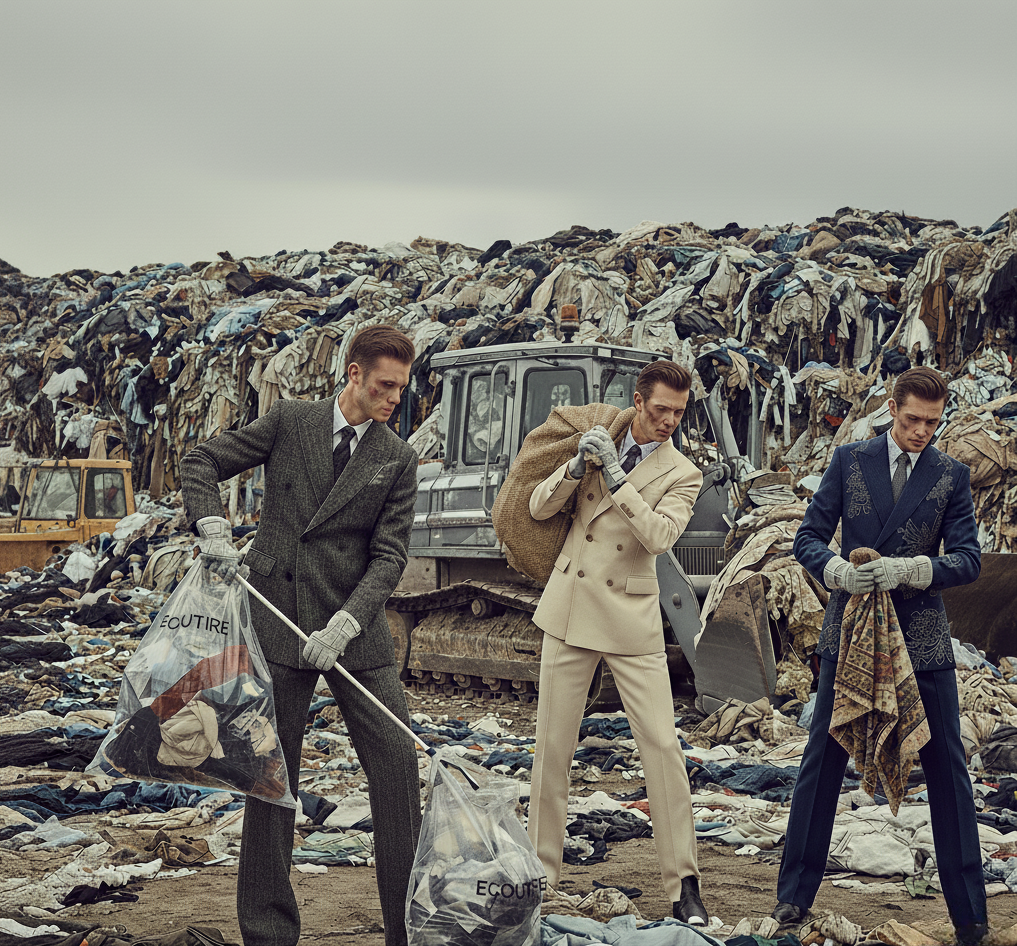What Just Happened?
The European Union just passed a game-changing law that will fundamentally change how fashion works. Starting in 2028, every brand selling clothes in Europe must pay for the complete lifecycle of their products, from collection to recycling.
This Extended Producer Responsibility law targets the 12.6 million tonnes of textile waste Europeans generate annually, with less than one percent currently recycled into new products.
The core principle is simple: if you profit from selling clothes, you pay for what happens when customers throw them away. This applies to everyone from luxury brands, like Chanel and Stella McCartney, through fast fashion, like Zara and H&M, and ultra-fast fashion, online retailers like Shein and Temu - regardless of where they’re based!
Who Pays and What It Costs
Every fashion company selling in the EU faces new fees! These cover collection points where consumers drop off old clothes, sorting facilities, transportation, and actual recycling or disposal. Current estimates suggest around three cents per garment, but fees will vary dramatically based on sustainability.
Fast fashion brands using hard-to-recycle materials and designing for short lifespans will pay significantly more. Companies making durable, recyclable products get lower fees. This “eco-modulation” system specifically targets the economics of disposable fashion.
The financial impact scales with volume. A major retailer selling 100 million items annually could face tens of millions in EPR fees, while sustainable brands might pay a fraction of that amount.
The Enforcement Challenge
Critics question whether the law can actually work. Companies like Shein already operate in regulatory gray areas, often avoiding taxes and safety requirements. They ship millions of packages directly from China, making enforcement extremely difficult.
The EU plans to require all non-European companies to register and pay fees, but tracking compliance across millions of individual shipments presents massive logistical challenges. Previous attempts to regulate global e-commerce have shown mixed results.
Platform liability becomes crucial.
Amazon and other marketplaces must ensure all sellers comply, potentially blocking non-compliant companies. However, smaller sellers might simply ignore the rules, betting on weak enforcement.
The Divided Impact on Sustainable Brands
EPR creates both opportunities and challenges for sustainable companies.
Small sustainable brands face administrative burdens that hit their thin margins proportionally harder than large corporations. Fixed compliance costs and complex reporting requirements could force some ethical companies out of business while fast fashion giants with dedicated legal teams absorb these costs more easily.
However, genuinely sustainable brands gain powerful competitive advantages. EPR fees reward companies making durable, recyclable products with significantly lower costs. These brands can now market their sustainability transparently, showing consumers exactly how much less their products cost society in waste management fees compared to fast fashion alternatives.
The economic equation flips in favor of circular design.
Brands using mono-materials, designing for disassembly, and creating long-lasting products pay dramatically lower EPR fees. This creates measurable competitive advantages and authentic marketing opportunities that cut through greenwashing. Companies can now prove their sustainability claims with concrete regulatory data rather than vague promises.
Technology and Jobs Transform the Industry
EPR economics make automation inevitable.
Manual textile sorting currently accounts for 30 percent of recycling costs. New AI-powered systems can identify and sort materials with 95 percent accuracy in under two seconds, making automated processing economically viable.
France’s existing EPR program has already created 1,400 full-time jobs in textile sorting. Scaling this across the EU could generate over 65,000 direct jobs in collection, sorting, and recycling, with thousands more in supporting industries.
Investment flows toward circular infrastructure. EPR provides guaranteed funding streams that attract private investment in recycling technology. Companies are developing heat-dissolvable stitching, modular clothing designs, and chemical recycling processes that can turn old clothes into new textiles.
Business Models Revolution
Rental, repair, and resale become profitable.
EPR changes the economics by making new clothing more expensive relative to circular alternatives. Fashion-as-a-service models, where companies retain ownership and recirculate garments among multiple users, align perfectly with EPR incentives.
Brands designing for disassembly and recyclability gain competitive advantages through lower fees. This rewards durability, repairability, and material choices that support true circularity rather than just marketing claims.
Consumer behavior shifts gradually.
While EPR fees remain small relative to garment prices, they create economic pressure that accumulates over time. Combined with better collection infrastructure and growing sustainability awareness, this could reduce the appeal of ultra-fast fashion.
Global Implications and Future Outlook
The EU’s approach influences worldwide policy. California has passed similar legislation, and other regions are developing comparable measures. Large fashion companies often find it easier to adopt the highest standard globally rather than managing different compliance systems.
However, enforcement challenges remain significant. While affluent shoppers buy from compliant brands, price-sensitive consumers might shift toward non-compliant platforms. This could create a two-tier market if regulations aren’t strictly applied.
Early results show mixed outcomes. Countries with existing EPR programs demonstrate increased textile collection and new job creation, but also reveal the complexity of changing established supply chains and consumer habits.
Success depends on sustained political commitment and the fashion industry’s willingness to fundamentally restructure rather than simply add compliance costs.
The transformation will likely unfold gradually, with genuine circular business models gaining ground alongside continued challenges in enforcement and market adaptation. If implemented effectively, EPR could mark the beginning of fashion’s shift from a wasteful linear model to a truly circular economy that benefits both businesses and the environment.





